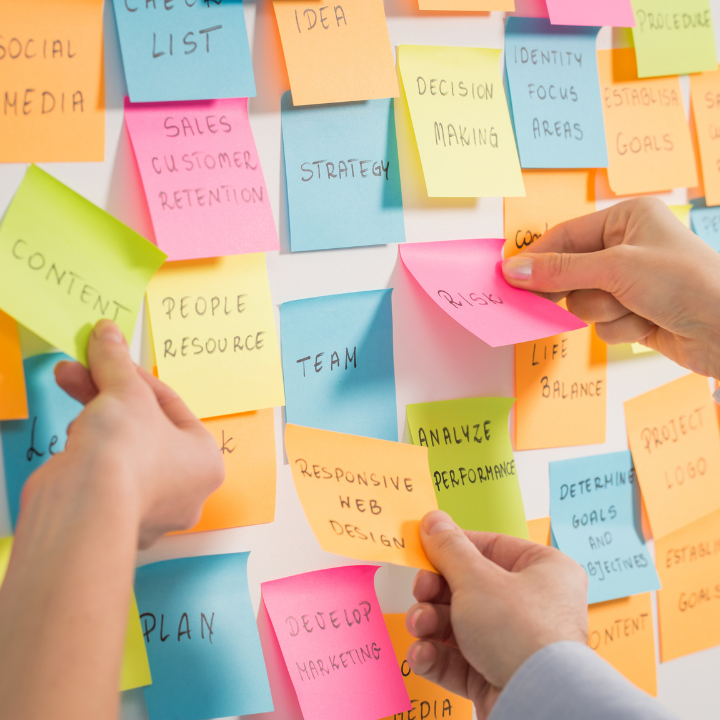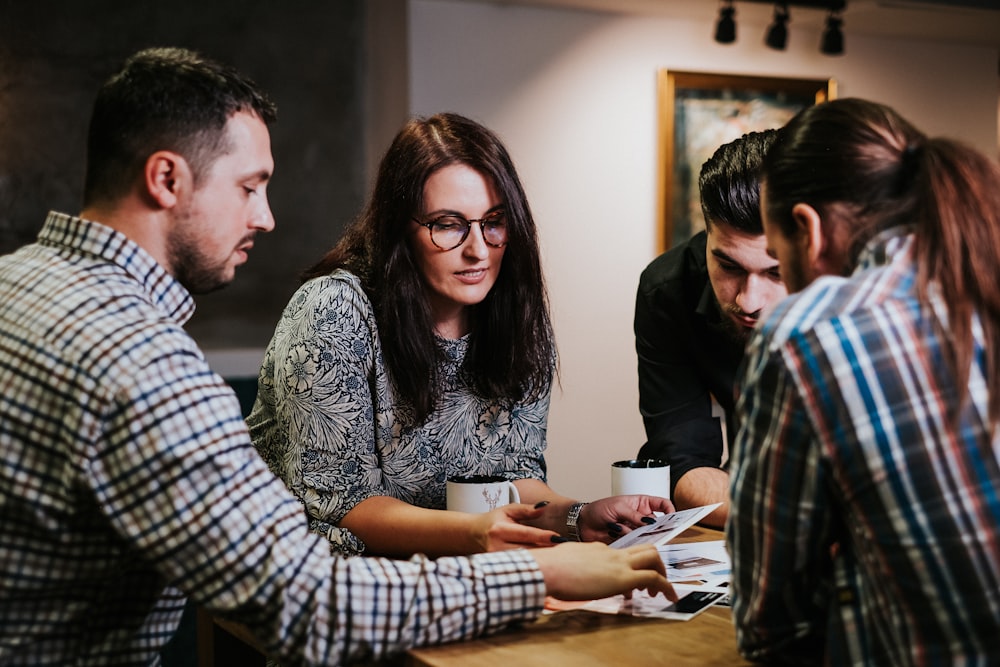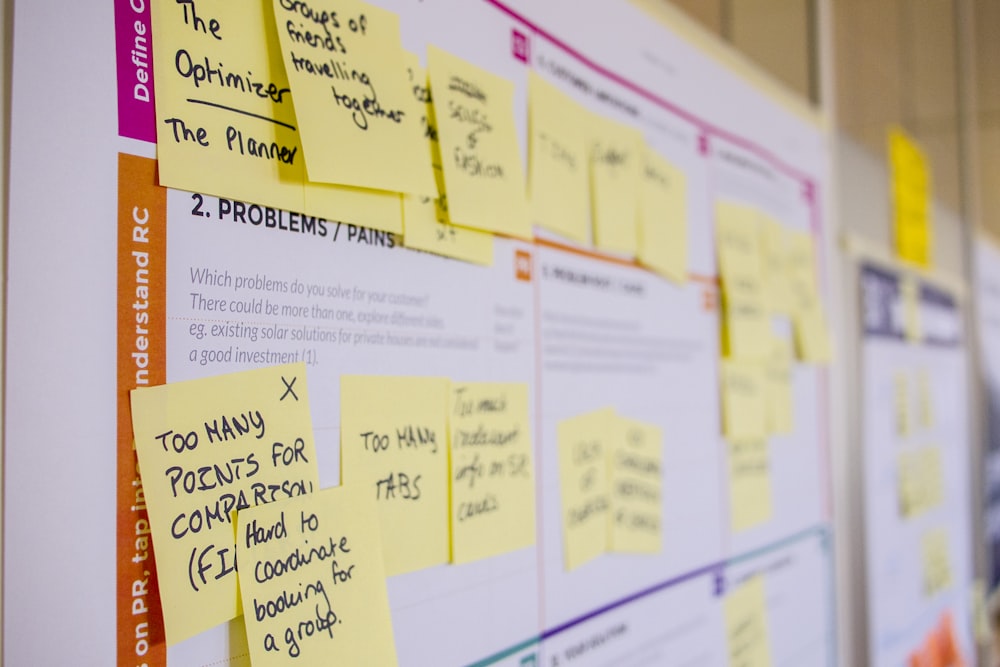Creative brainstorming is a collaborative way to develop ideas and solve problems within groups or teams – it’s about creativity, productivity, and sharing ideas.
Ideally, the best brainstorming results are provided when a diverse team of people come together with different opinions and ideas, allowing for a variety of knowledge and experience to be shared. A range of personalities and perspectives can often help get the creative juices flowing, collectively supporting fresh new ideas to be developed into well-rounded concepts that provides a solution to your problem.
Generally speaking, brainstorming is an uncomplicated and relatively cost-effective way of gaining a large number of fresh ideas. Brainstorming has several benefits including improving the products or services offered, taking advantage of gaps in the market, and creating new markets. In addition to ideas, group brainstorming can also act as a great team-building exercise and uses your collective team power to solve problems.
For more information on creativity in house, check out Episode 8 from Season 2 of our podcast, Revitalise & Grow, which is all about fostering creativity in-house. You may also like to listen to this episode where we ask the question, ‘Has working remotely killed creativity?’
The most successful brainstorming teams are those who allow and encourage participation. Team brainstorming can improve the working environment, promote more teamwork and develop better employee relations. However, when facilitating a session, it is crucial to use some structure, as poorly structured sessions can end up wasting your time.
Here’s our top tips for running a creative brainstorming session to foster a safe and supportive environment, which generates outstanding ideas from your team…
Clearly brief the team
Clearly brief the team beforehand to ensure everybody is equipped with the fundamental knowledge they need to know prior to the session. It is best practise for those involved to read around the topic choice, finding suggestions, inspiration, and ideas through relevant sources of information, to bring to the table as talking points and ideas to be developed. You need to allow at least a few full working days to circulate the brief before the session commences, to give everyone’s ideas enough time to form and bring to the brainstorm!
Give everyone a voice
It is vital, especially in a larger brainstorming group, to give everybody a voice and not let one or two speakers dominate. The more opinions shared and discussed will lead to a more effective result. Remember, it’s not always the most senior members of the team who have the best ideas!
Have no negative comments
With a mixture of roles, personalities, and opinions in the group, it is essential that everyone attending is encouraged to be involved positively and co-operate. Negative feedback and comments are never a productive way to react to anybody’s ideas or input. This will discourage the team from involving themselves and bring down the group experience – stay positive! One easy way to do this is to ban the word “but”, instead encourage people to say “and” – this simple change helps to build on each other’s ideas rather than focusing on why something won’t work.
Repeat the brainstorming until the team members do not have any more ideas. Once the creative session is complete, the ideas can be discussed, reviewed, developed, or discarded where necessary.
At ADPR, we often use creative brainstorming at the start of a client project to enable us to build an effective PR plan. And clients will recognise this technique is often used at our on-going meetings as well! If you’re looking for more advice on running brainstorming sessions or want some help with your PR planning, email us on hello@adpr.co.uk or request a call back.





